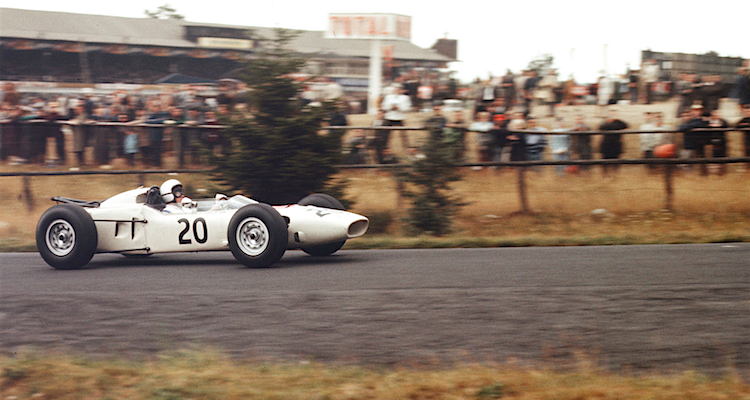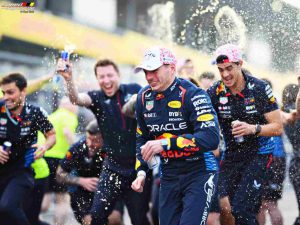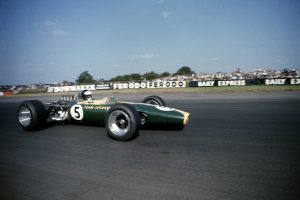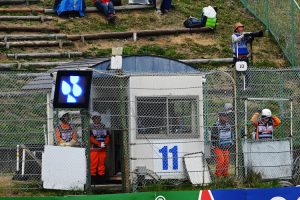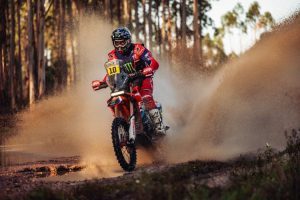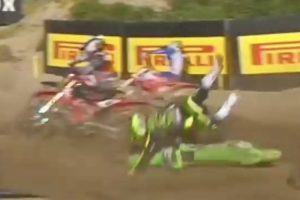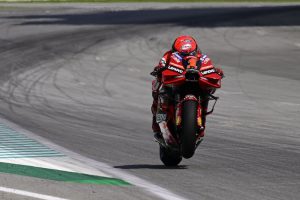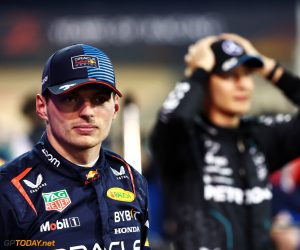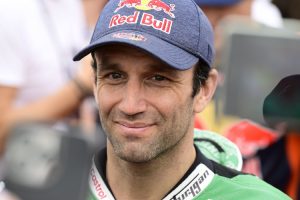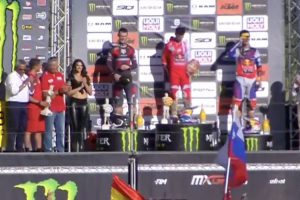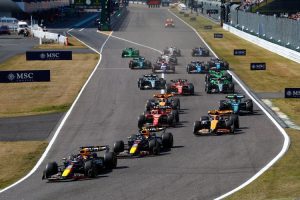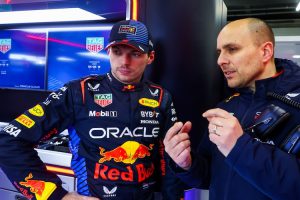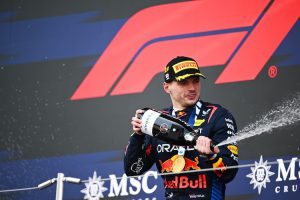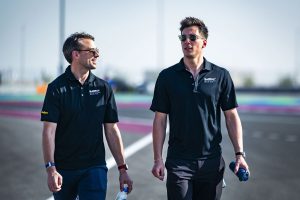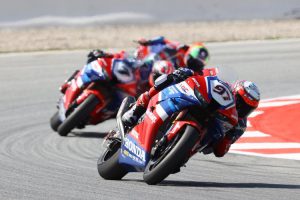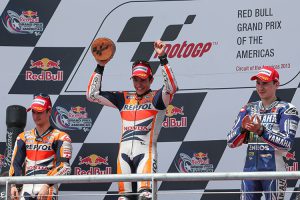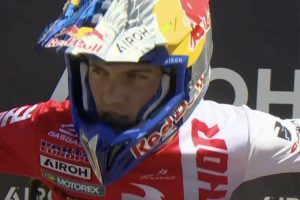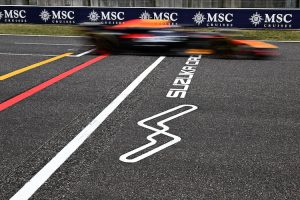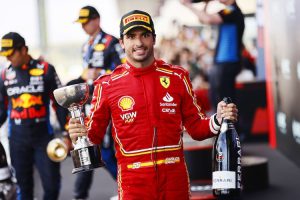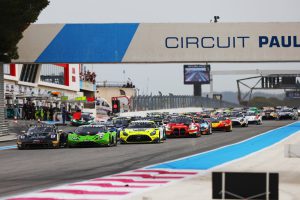Honda will celebrate sixty years of participation in Formula 1 in 2024. One person embodied the growth of the Japanese automobile industry – Soichiro Honda, a visionary who was like a father to many workers.
Honda has returned to the top of Formula 1 with Max Verstappen and Red Bull Racing in 2021 and is chasing its fourth consecutive world title in 2024. Meanwhile, Honda is celebrating 60 years of Formula 1 participation this year. Who would have thought that after a beginning that was normal, at all?
After all, in 1964 no one can accuse Honda of lack of courage, because the Japanese took their first Formula 1 car to the hardest track of all races, the Nürburgring, and with a blank slate at the helm, Ronnie Bucknum of California. .
The Honda RA271 surprised the experts with a 1.5 liter V12 engine, mounted on the opposite side of the rear, basically no different than twelve times the shape of a 125cc motorcycle engine. Supposedly the most powerful engine of the 1500 F1 generation. The car was supposed to be used for the Belgian GP at Spa-Francorchamps, but it was not completed in time.
Bucknum was lucky that he was able to start the race at the Nürburgring, as only the fastest 22 were allowed to start. In practice with his overweight racer, Bucknum was twenty seconds slower than Giancarlo Baghetti in the BRM and almost a minute (!) slower than John Surtees in the Ferrari. Basically, Bucknum only slipped through the field because Scirocco driver André Pilette was faster and Carel Godin de Beaufort died in practice.
Things went well for the American in the race, he drove consistently, although he was outside the top ten. On the 12th out of 15 laps he slid off the track due to a broken steering wheel, but was ranked 13th due to the distance covered. Bucknum fled in shock.
Only one car was built in Tokyo at the time, the RA271 car designed by architect Yoshio Nakamura is now in the Honda Museum at Twin Ring Motegi. Just like other two- and four-wheeled treasures, it all goes back to the man who was like a father to many workers, the visionary Soichiro Honda.
A humble beginning
Soichiro Honda was born on November 17, 1906 in Hamamatsu in Shizuoka Prefecture in Honshu, the main island of Japan, located 100 kilometers southwest of Tokyo, as the first of five children. He was not very interested in school, but more in technology and mechanics. So he began an apprenticeship in Tokyo in a bicycle and motorcycle repair shop, and later also in cars.
With the support of his boss there, Art Shokai, he returned to his hometown of Hamamatsu in 1928 to establish a branch there and run it as a director. Meanwhile, after work he worked as a racing mechanic for his boss, who ran car races. In 1931, Soichiro Honda filed his first patent for a steel mouthpiece.
Roots in motorsport
In July 1936, Soichiro Honda participated in his first car race as a driver and with one of his brothers as a co-driver in the “All Japan Speed This ended with his first of several fatal accidents. In a circular race on the Tama River course near Tokyo that same year, he was already well ahead with a lap record when he collided with a skid steer and was thrown from the car. It took two years to recover from his serious injuries (broken shoulder and wrist as well as facial injuries).
At some point he came to the conclusion that he should limit himself to design and founded his first company, “Tokai Seiki Heavy Industry”, in 1937. He used this to manufacture pistons and piston rings. He did it not for profit, but because he wanted to deal with the frequent problems of internal combustion engine oil that existed up to that time.
He conducted many unusual experiments with various materials and metal alloys and found that his level of training was insufficient. So at the age of 31, he started studying at a technical university. In November 1937, Soichiro Honda was working on an improved piston ring made of a silicon-iron alloy. With this he became the market leader and the main distributor of Toyota.
Honda is born
During World War II, “Tokai Seiki Heavy Industry” also produced for the Japanese army. Large numbers of untrained workers were also required for mass production, which Soichiro Honda countered by switching to fully automated and robot-supported production. After the war, Soichiro Honda’s factory was badly damaged by war damage and a massive earthquake, but it was still so attractive that he was able to sell it to Toyota for good fortune at the time.
After that, his head was empty, but after a year away from the process of self-discovery, he established the “Honda Technical Research Institute” in Hamamatsu in October 1946 and began to produce mopeds and auxiliary engines. These proved to be best sellers, especially among the poor.
On September 24, 1948, he founded the “Honda Motor Company”, his last and largest empire. Initially, 50 and 98 cc engines were produced there, which were put on the bikes of business partners and sold as mopeds. Since the bike manufacturer could not keep up with the delivered numbers, Honda decided to build complete cars itself.
Honda’s first complete motorcycle was a model called the Dream Type D with a 98 cc air-cooled two-stroke engine. However, Soichiro Honda did not consider this technology to be sustainable, so from 1951 onwards he started using the less complicated four-stroke technology with the Honda Dream Type E with a 146 cc four-stroke engine and remained on this track for civilian life.
The role of motorsport
Guided by the philosophy of promoting global motorcycle sales through racing success, he visited the Isle of Man in 1954. However, it was not until 1959 that Honda entered the world stage after extensive testing and national racing in Japan.
In 1960, Teisuke Tanaka took Honda’s first podium in third place at the German Grand Prix at Solitude near Stuttgart and at the start of the 1961 World Cup, Australia’s Tom Phillis won the first Grand Prix in the class race to 125 cc at the Montjuich circuit in Barcelona a Prix victory for the company coming from the land of the rising sun. That year they were also very successful in the 250 cc class, so that at the end of the year both world championship titles went to Tom Phillis and Mike Hailwood respectively. It was the result of an unprecedented success story.
But Soichiro Honda was not only a motorcycle advocate but a car enthusiast all around. This is how his first racing car was built in the 1950s. At that time he was also in the car business and, more for personal pleasure, he built a car with a self-made chassis and a large American V8 aircraft engine.
When, at the beginning of 1962, the Japanese government proposed a law that wanted to reduce the number of large Japanese car manufacturers to three, following the example of the USA, it was necessary to act quickly. Honda quickly developed two cars, the T360 compact car and the S360 sports convertible, and presented them to the public at the Tokyo Motor Show in October of the same year. This had stopped the government, as such a law has now been reduced to absurdity.
Of course, it shouldn’t just be a quick decision, because Honda quickly became one of the most important manufacturers in the four-wheel industry. And once again, motorsport has to pave the way and raise awareness quickly. To do so, they considered entering Formula 1, acquired a Cooper-Climax from Jack Brabham and began building their own chassis using the chassis. Inboard development was chosen as the drive unit, which is 12 cylinders in V layout.
This was followed by a balanced start for Ronnie Bucknum in the 1964 season, and lessons were learned for a long time in the following year – until the season finale in Mexico City, Richie Ginther managed to get his first victory with Honda in Formula 1. It was also the first GP victory for the Goodyear tire brand.
Victory and tragedy
After Frenchman Jo Schlesser suffered a fatal accident in his Honda at the French Grand Prix in Rouen on July 7, 1968, Soichiro Honda decided to withdraw his team from Formula 1 at the end of the year.
In 1977, the company’s top management decided to return to Formula 1. However, they were limited to the normal production of engines for one or more otherwise independent teams. A six-year notice was given to put together a suitable team of technicians and engineers. After only one year of training in the first class of motorsport, Keke Rosberg won the Dallas Grand Prix in 1984 behind the wheel of Willimas Honda.
In 1987 they went on to celebrate their first Formula 1 World Championship title as engine supplier to Williams with Brazilian Nelson Piquet at the wheel. This was followed by a winning streak with four more consecutive world championship titles (1988 to 1991) with McLaren and drivers Ayrton Senna and Alain Prost.
Soichiro Honda could no longer celebrate the last world title. He died on August 5, 1991 at the age of 84 after a busy but fulfilling life.
Formula 1 still plays an important role at Honda: with Max Verstappen and Red Bull Racing, the Japanese returned to the top of Formula 1. The Japanese will work with Aston Martin from 2026.

